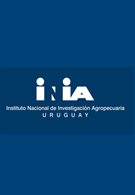ABSTRACT.- This study analyzed the impact of land use and cover changes, along with climate variability, on water consumption by quantifying actual evapotranspiration ((Formula presented.)) in the Tres Cruces River basin (TCR) in Uruguay. Using Landsat 8 and 9 images from 2014 to 2024, the SAFER method (Simple Algorithm for Evapotranspiration Retrieving), applied for the first time in Uruguay, estimated (Formula presented.) for natural vegetation (grasslands and riparian forests) and commercial afforestation areas. Quality metrics, including determination coefficient (r2 = 0.87), Pearson correlation (r = 0.94), root mean square error (RMSE = 1.46 mm/day), and Nash-Sutcliffe efficiency (NSE = 0.34), were utilized for SAFER's optimal parameterization based on the literature. Results revealed monthly (Formula presented.) variability and highlighted higher (Formula presented.) values for afforestation areas, exceeding grasslands by 26.5% and riparian forests by 4.79%, reflecting increased water demand due to greater biomass and photosynthetic activity. Additionally, prolonged drought periods correlated with increased water consumption by forest vegetation, despite the Standardized Precipitation-Evapotranspiration Index (SPEI) remaining within normal bounds during the 2020-2023 drought. These findings underscore the significant hydrological implications of converting grasslands to afforestation and the need for integrated water resource management amid expanding commercial forestry in the region. © 2025 by the authors.

